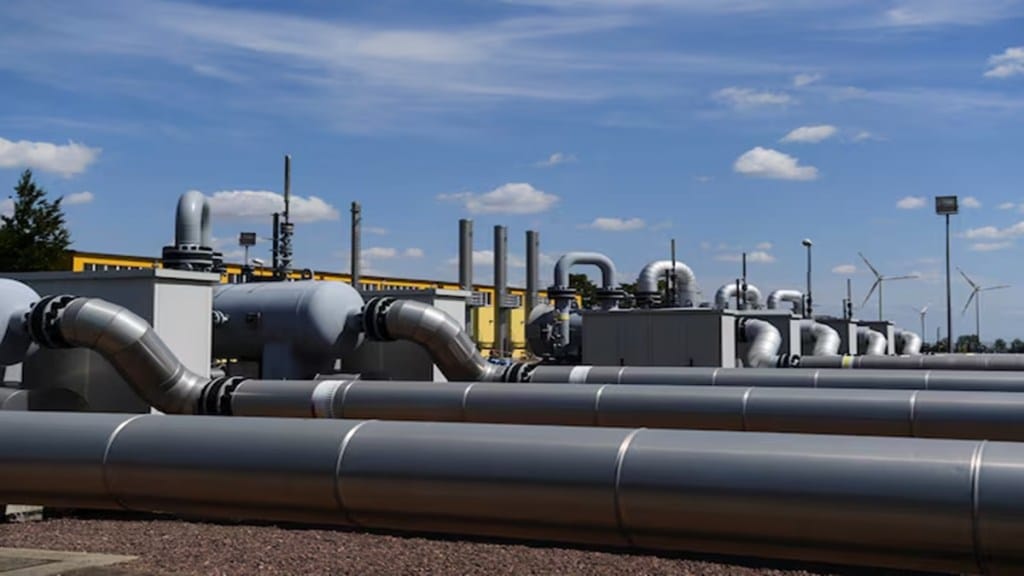By Vineet Mittal
This is not a doomsday warning, but a reality check. If we fail to align with rapid global shifts in hydrogen technology, nearly 80% of today’s electrolyser manufacturers could be edged out by a wave of innovation they never saw coming. The tectonic forces at play — system integration, intelligent controls, and cost compression — are already reshaping the sector’s foundations. For India, which has bet big on the green hydrogen revolution through its production-linked incentive (PLI) scheme, the moment to recalibrate is now.
India’s PLI scheme for electrolysers was a bold and necessary move to catalyse domestic manufacturing and reduce import dependence. But the pace of global innovation, particularly from China, threatens to render today’s investments outdated. To stay competitive and relevant, we need to evolve our approach.
The disruption is already visible. The China Energy Construction Hydrogen Company recently cleared a national review for an 8,000 normal cubic metre (Nm3)/hour flexible alkaline water electrolysis system. While it might seem like just another technological upgrade, the implications are transformational. This new generation of systems is no longer only about producing hydrogen. It is about integrating hydrogen production seamlessly with the broader energy ecosystem.
China’s system combines a 10-megawatt IGCT (integrated gate-commutated thyristors) intelligent power source with its electrolyser platform, creating a full-stack solution that marries power electronics, load flexibility, and high responsiveness. It allows operational flexibility ranging from 10% to 110%, an impressive leap from the traditional 30-100% range. Millisecond-level response times enable off-grid hydrogen production without compromising energy stability. As a result, energy storage infrastructure costs have dropped by 30%, reducing the levelised cost of hydrogen by $0.04/Nm3.
This is a redefinition of what hydrogen systems can and should be. It marks a clear shift from hardware-centric production models to software-augmented, integrated energy ecosystems. And this shift is happening faster than many anticipated.
Traditional electrolyser manufacturers, especially in India, face serious headwinds. System integration is blurring the lines between hardware, control systems, and software intelligence. As these elements increasingly get bundled into single EPC (engineering, procurement, and construction) contracts, legacy players are seeing their margins erode. This is reminiscent of what happened in the mobile phone industry, where standalone component suppliers were wiped out as value creation moved upstream into integrated systems.
Indian manufacturers are not only grappling with integration challenges but also falling behind in performance benchmarks. Many still cannot offer 100% negative load regulation, a baseline capability in newer systems globally. Meanwhile, China is setting new standards in load responsiveness and energy coordination, establishing itself as not just a participant in the value chain but also a rule-maker.
Adding to the urgency is the shifting nature of competition. The price war is essentially over. With base manufacturing costs already at RMB 750/kilowatt, there is minimal room for further cost reductions. The next frontier of competition will revolve around capability, not capacity. It will hinge on who can integrate intelligent systems, support grid variability, and enable industrial use cases such as off-grid hydrogen and green ammonia.
This is where India’s PLI scheme must evolve. Today, the scheme rewards capacity build-out — megawatts of stack production, plant footprints, and capital deployed. But volume, without viability, is a risky proposition. We have seen this script before. In 2015, over 200 lithium battery start-ups in China collapsed after CATL redefined the industry through vertical integration. India must avoid a similar collapse in the hydrogen space.
The future of India’s hydrogen manufacturing depends on three critical course corrections. First, technology readiness must be treated as a non-negotiable entry barrier. The PLI should support companies that meet global performance benchmarks — load flexibility across a wider dynamic range, millisecond responsiveness, and seamless integration with power electronics. Without these, we risk locking in outdated technologies.
Second, margin sustainability should become a core eligibility filter. Manufacturers who cannot demonstrate a gross margin of at least 15% in a systems-integrated model are unlikely to survive long-term. The sector should not become a race to the bottom on costs; it must be a race to the top on performance and differentiation.
Third, we must prioritise use-case relevance over mere manufacturing ambition. Firms working on real-world applications — off-grid hydrogen, ammonia production, chemical process decarbonisation — should be prioritised. A one-size-fits-all model that treats all capacity as equal will dilute our strategic edge.
The hydrogen story is no longer just about splitting water into hydrogen and oxygen. It is about integrating intelligent systems that respond real-time to energy dynamics. It is about making green hydrogen clean as well as cost-efficient, reliable, and flexible. India will gain an edge not by producing the most electrolysers, but by building the smartest hydrogen ecosystems.
If India truly wants to lead the hydrogen economy of tomorrow, we must shift our mindset. We need to stop chasing volume and start backing value.
The writer is chairman, Avaada Group.
Disclaimer: Views expressed are personal and do not reflect the official position or policy of FinancialExpress.com. Reproducing this content without permission is prohibited.

